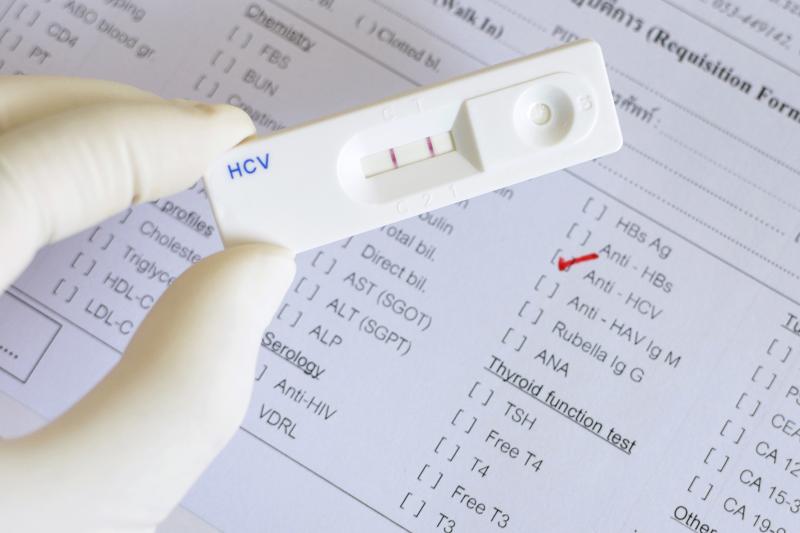From 20 to 5 min: Shortened read time of rapid HCV antibody test just as sensitive





Reducing the wait time for the hepatitis C virus (HCV) rapid antibody point-of-care (POC) test, from 20 minutes to 5 minutes, does not affect its sensitivity and is just as good for ruling out infection, according to a study.
“Patients testing negative at 5 minutes can be reliably told that they do not have active HCV infection,” according to the investigators.
The shortened read time may significantly increase the test's utility in both high- and low-income settings, they continued. “[It] improves throughput, substantially decreases the need for reflex RNA testing, and would avoid the loss to follow-up rates observed even with a 20-minute wait time.
“These simple improvements to an existing test would contribute to the high-sensitivity, high-throughput testing required to achieve the World Health Organization goals [of global elimination of HCV],” the investigators said.
They tested whether HCV viraemia could be identified using a shorter read time with the rapid antibody POC test in 171 viraemic and 108 nonviraemic individuals (27 with sustained virological response [SVR] in the last 3 years; 63 with SVR for >3 years; 18 with spontaneous clearance).
The median age was higher in the SVR group than in viraemic individuals or spontaneous clearers (63.5 vs 56.0 vs 44.5 years, respectively). There were slightly more men than women among viraemic (60 percent) and SVR (59 percent) patients vs spontaneous clearers (50 percent). Genotype distribution was similar between viraemic and SVR groups, with types 1 and 3 being most common.
Blood from all viraemic patients produced a positive result in the antibody POC test by 5 minutes, with a median time of 2.6 minutes as opposed to 4.1 minutes for patients with resolved infection (p<0.001). [Clin Gastroenterol Hepatol 2020;doi:10.1016/j.cgh.2020.07.058]
Next, the investigators validated the results in a real-world cohort of 176 HCV antibody-positive patients (median age, 49 years; 76.7 percent male). On HCV RNA testing, 56 of these patients (31.8 percent) were viraemic, 102 (58.0 percent) were nonviraemic, and three (1.7 percent) had indeterminate results; the remaining 15 (8.5 percent) had no follow-up RNA test.
The 5-minute threshold for the antibody POC test identified all 56 viraemic cases, confirming 100 percent sensitivity for viraemia (95 percent confidence interval [CI], 98.4–100) and 100 percent negative predictive value for absence of viraemia (95 percent CI, 94.9–100) at the 5-minute read-time.
“[Meanwhile], the positive predictive value at 5 minutes was 62.0 percent (95 percent CI, 56.7–67.0) and therefore insufficient alone to detect viraemia,” the investigators said. “An HCV RNA test would still be necessary to confirm active infection.”
They expressed confidence in the reliability of the 5-minute test to exclude viraemia, citing the breadth of their approach.
“We evaluated the test in a large clinical cohort with well-pedigreed samples from finger-prick whole blood, and frozen serum,” the investigators said. “[W]e subsequently validated the strategy in a real-world cohort, testing individuals at high-risk for HCV, including people with treated and untreated HIV co-infection.”
One important limitation of the 5-minute rule is the potential of missing recently infected individuals who have yet to develop detectable levels of antibodies, the investigators pointed out. They explained that while antibody titres are still rising, a time-to-positivity duration of 5 minutes might not be enough to identify viraemic patients.
“However, in early infection, people may test antibody-negative regardless of the assay; if acute infection is of clinical concern, an HCV RNA testing should be performed, or patients should return for re-testing,” they noted.
“While additional real-world validation would clearly be helpful, the benefits in terms of reducing loss-to-follow-up (>18 percent in our experience) justify consideration of early adoption of the proposed early read-time,” the investigators said.